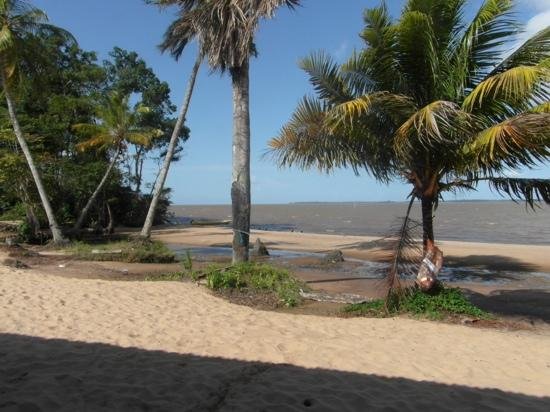Imagine being immersed in a breathtaking landscape filled with pristine beaches, lush rainforests, and an incredible array of wildlife. Welcome to Galibi Nature Reserve, a hidden gem nestled along the northeastern coast of South America. This untouched paradise is a dream come true for turtle enthusiasts, as it serves as a vital nesting ground for four species of sea turtles. Get ready to embark on a captivating journey as you uncover the wonders of Galibi Nature Reserve, where conservation meets adventure and turtles reign supreme.
Overview
Welcome to Galibi Nature Reserve, a hidden gem for turtle conservation located on the northeastern coast of South America. This picturesque reserve, encompassing more than 4000 hectares, is a sanctuary for various species of turtles, making it a haven for turtle enthusiasts. This article will take you on a journey through the wonders of Galibi Nature Reserve, exploring its location, importance for turtle conservation, diverse flora and fauna, turtle species, conservation efforts, turtle watching opportunities, other wildlife encounters, activities and attractions, conservation challenges, and community engagement. So, let’s dive in and discover the beauty of this unique habitat!
Location of Galibi Nature Reserve
Galibi Nature Reserve is nestled in the northeastern coast of Suriname, a small country in South America. It is situated at the mouth of the Marowijne River, which forms the border between Suriname and neighboring French Guiana. The reserve spans across both countries, with a larger portion falling within the Surinamese territory. Its strategic location, surrounded by pristine beaches and lush forests, provides an ideal environment for the protection and preservation of turtle populations.
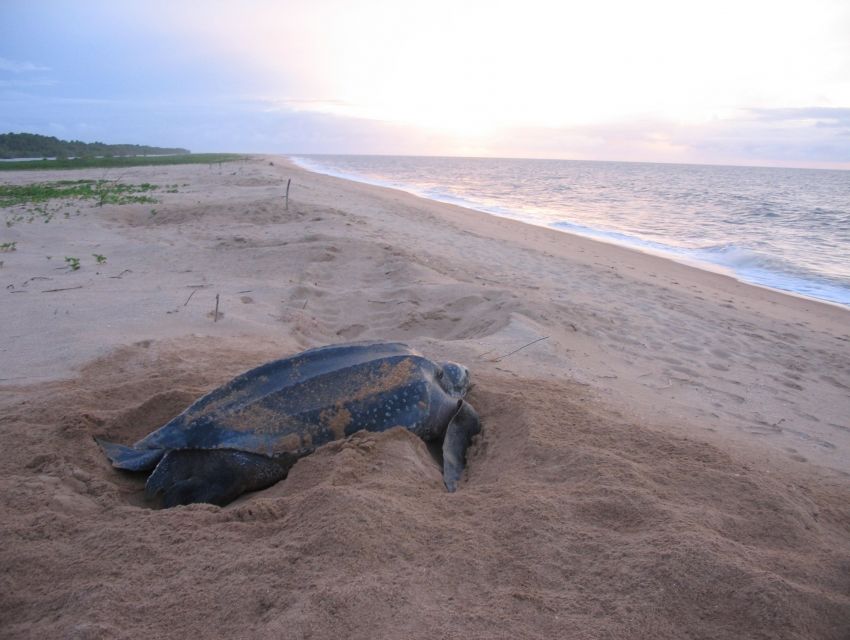
Importance of Galibi Nature Reserve for turtle conservation
Galibi Nature Reserve plays a crucial role in the conservation of turtles, serving as a safe haven for various species during their nesting periods. The reserve is particularly significant for the protection of endangered turtle species, such as the Giant Leatherback Turtle and the Green Sea Turtle. These majestic creatures rely on the beaches of Galibi Nature Reserve to lay their eggs, ensuring the survival of their species.
Flora and Fauna
Diverse plant species in Galibi Nature Reserve
The flora of Galibi Nature Reserve is an enchanting blend of coastal vegetation and tropical forest. The reserve is home to a diverse array of plant species, ranging from mangroves and palm trees to beautiful orchids and bromeliads. Walking through the reserve, you will be surrounded by lush greenery, a testament to the rich biodiversity of this unique habitat.
Variety of animal species in Galibi Nature Reserve
Galibi Nature Reserve is teeming with life, both on land and in its surrounding waters. From elusive jaguars and playful river otters to colorful parrots and curious monkeys, the reserve is a wildlife enthusiast’s dream come true. The marine ecosystem surrounding the reserve is equally vibrant, with dolphins, manatees, and various fish species adding to the diversity of the area.
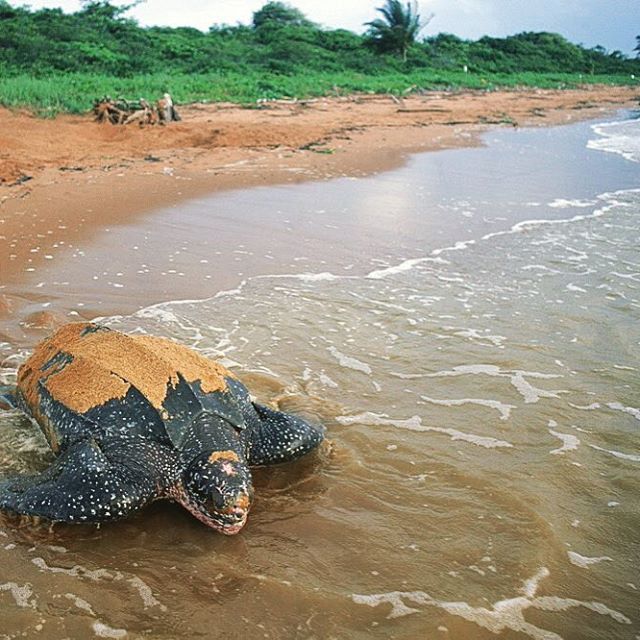
Turtle Species
Different turtle species found in Galibi Nature Reserve
Galibi Nature Reserve is home to a variety of turtle species, each with its own distinct characteristics. The reserve boasts the presence of the Giant Leatherback Turtle, an awe-inspiring marine creature known for its enormous size and unique shell structure. Other notable turtle species found here include the Green Sea Turtle, Olive Ridley Turtle, and Hawksbill Turtle. These ancient creatures grace the beaches of Galibi Nature Reserve to lay their eggs, creating a mesmerizing spectacle of nature.
Nesting habits of turtles in Galibi Nature Reserve
Turtles have an intriguing nesting process, and Galibi Nature Reserve offers a front-row seat to witness this natural wonder. Every year, between February and August, female turtles make their arduous journey from the sea to the beaches of Galibi Nature Reserve to lay their eggs. These turtles, guided by an innate sense of navigation, dig deep holes in the sand and deposit their precious cargo of eggs before returning to the ocean. After a couple of months, the hatchlings emerge from their shells and embark on their own perilous journey back to the sea, guided by the moonlight.
Turtle Conservation Efforts
Protective measures for nesting turtles
Galibi Nature Reserve has implemented various protective measures to ensure the safety and well-being of nesting turtles. The reserve has strict regulations in place to prevent disturbance to nesting sites and restrict human activities during crucial nesting seasons. Conservationists and volunteers work tirelessly to monitor the nesting activities, safeguard the eggs from predators, and provide a conducive environment for the hatchlings to make their way into the ocean.
Community involvement in turtle conservation
Conservation efforts in Galibi Nature Reserve are not solely reliant on external organizations. The local communities, particularly the indigenous tribes residing in the reserve, play a pivotal role in turtle conservation. These communities have a deep cultural connection with turtles and actively participate in protecting their nesting sites. They also collaborate with conservation organizations to raise awareness among visitors and promote sustainable practices that ensure the long-term survival of turtles.
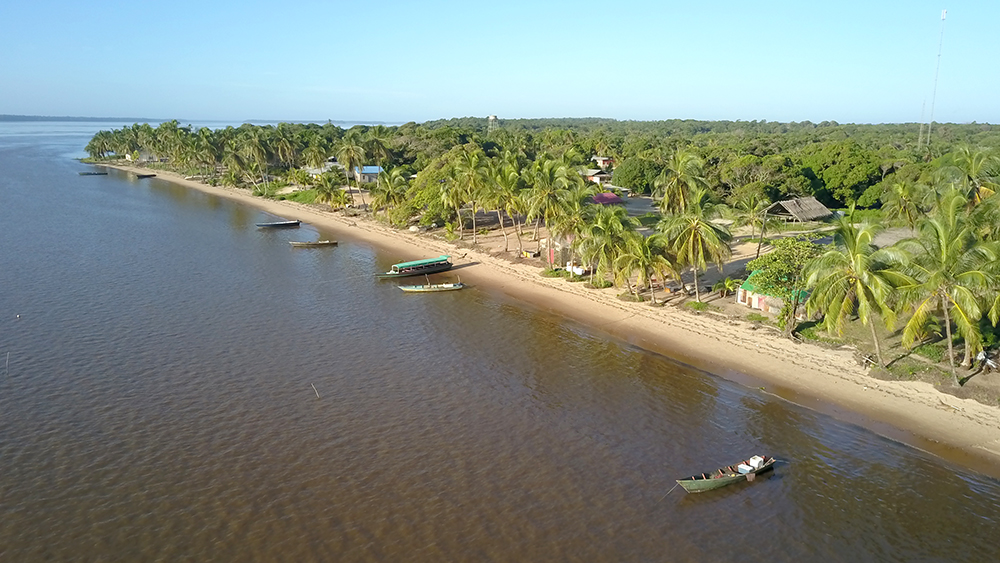
Turtle Watching
Best time for turtle watching at Galibi Nature Reserve
If you are a turtle enthusiast eager to witness the nesting rituals of these magnificent creatures, the best time to visit Galibi Nature Reserve is between March and July. During this period, the beaches come alive with the arrival of nesting turtles, providing an unforgettable experience for visitors. However, it is important to plan your visit in advance, as access to nesting areas may be limited to ensure the safety of the turtles.
Guided tours and regulations for turtle watching
To make the most of your turtle watching experience, it is advisable to join guided tours organized by local guides or authorized agencies. These tours not only ensure your safety but also provide valuable insights into the life cycle and behavior of turtles. It is crucial to adhere to the regulations put in place to protect the turtles, such as maintaining a safe distance, avoiding flash photography, and refraining from touching or interfering with the nesting process. By respecting these guidelines, you can contribute to the conservation efforts and make a positive impact.
Other Wildlife
Birds and mammals in Galibi Nature Reserve
While turtles take center stage in Galibi Nature Reserve, the reserve is also a haven for birdwatching and mammal sightings. The diverse ecosystem supports a rich avian population, with numerous bird species gracing the skies above the reserve. From majestic Harpy Eagles to colorful Scarlet Macaws, bird enthusiasts will be captivated by the sheer beauty and variety of feathered creatures. The reserve is also home to various mammals, including elusive jaguars, tapirs, and playful squirrel monkeys.
Unique wildlife encounters at Galibi Nature Reserve
The unique blend of coastal and forest habitats in Galibi Nature Reserve offers visitors the opportunity for extraordinary wildlife encounters. Imagine spotting a playful dolphin or a graceful manatee swimming in the crystal-clear waters. Picture yourself observing a jaguar stealthily hunting its prey or a troop of monkeys swinging through the treetops. Galibi Nature Reserve offers these magical moments and more, providing an unforgettable experience for wildlife lovers.
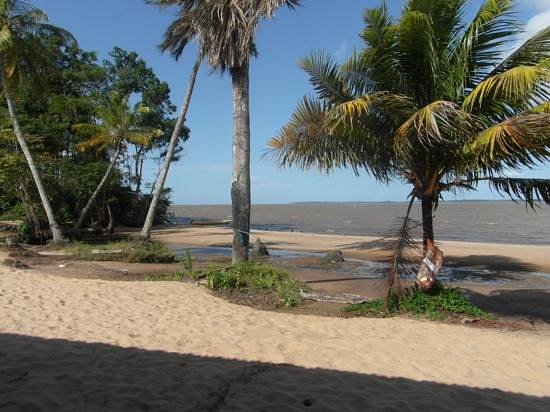
Activities and Attractions
Exploring the pristine beaches
Galibi Nature Reserve’s pristine beaches are more than just nesting grounds for turtles. They offer a serene and picturesque setting for visitors to relax and rejuvenate. Whether you want to bask in the sun, go for a leisurely stroll along the shoreline, or simply immerse yourself in the sounds of crashing waves, the beaches of Galibi Nature Reserve provide the perfect escape from the hustle and bustle of everyday life.
Visiting indigenous communities in Galibi Nature Reserve
A visit to Galibi Nature Reserve is incomplete without interacting with the indigenous communities that call this reserve home. The local indigenous tribes, such as the Carib and the Arawak, have lived harmoniously with nature for centuries and possess a deep knowledge of the surrounding ecosystem. Engaging with these communities offers a unique cultural experience, where you can learn about their traditional practices, taste local delicacies, and even take part in traditional ceremonies. This cultural exchange enriches your visit and provides a deeper understanding of the importance of preserving this unique habitat.
Conservation Challenges
Threats to the turtle populations in the reserve
Despite its protected status, Galibi Nature Reserve faces several challenges in its mission to conserve turtle populations. Climate change, habitat degradation, and pollution pose significant threats to both nesting turtles and the marine ecosystem. Rising sea levels and increased storm frequency can jeopardize nesting sites, while pollution from human activities can harm turtles and their habitats. Additionally, illegal poaching and egg collection continue to be major concerns, as they directly impact the survival of turtle populations.
Illegal hunting and habitat destruction
Illegal hunting and habitat destruction are also pressing conservation challenges faced by Galibi Nature Reserve. Local communities and conservation organizations work hand in hand to combat these issues. By implementing stricter surveillance and enforcement measures, promoting sustainable fishing practices, and educating communities about the importance of conserving their natural heritage, these challenges can be mitigated, allowing the reserve to thrive as a sanctuary for turtles and wildlife.
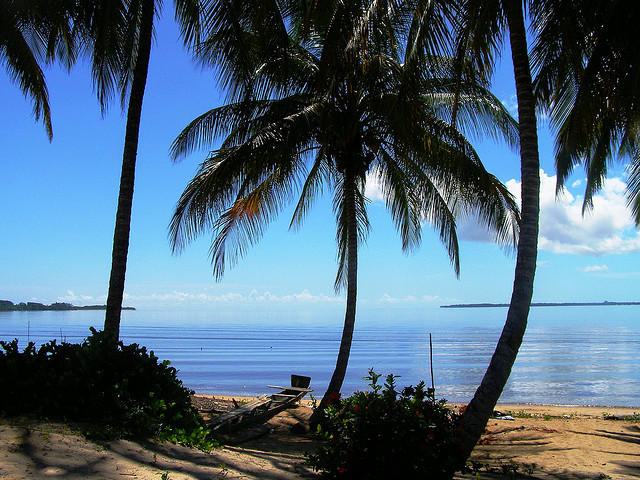
Community Engagement
Local initiatives for sustainable tourism
Galibi Nature Reserve prioritizes sustainable tourism practices that benefit the local communities and protect the environment. Several initiatives have been undertaken to promote eco-friendly practices, such as waste management systems, the use of renewable energy sources, and the development of community-run eco-lodges. These initiatives not only generate income for the local communities but also ensure that tourism activities leave minimal ecological footprints, preserving the natural beauty of the reserve for generations to come.
Partnerships and collaborations for conservation
Protecting Galibi Nature Reserve requires collaborative efforts between various stakeholders, including government agencies, non-governmental organizations, and local communities. Partnerships and collaborations have been established to combine resources, knowledge, and expertise in conservation activities. These partnerships focus on strengthening monitoring and research efforts, creating educational programs, and implementing sustainable development initiatives. Through these joint endeavors, Galibi Nature Reserve continues to flourish as a model for conservation and community engagement.
Conclusion
In conclusion, Galibi Nature Reserve is truly a treasure for turtle enthusiasts and nature lovers alike. Its strategic location, diverse flora and fauna, unique turtle species, and concerted conservation efforts make it a haven for those seeking an immersive experience in nature. From witnessing awe-inspiring turtle nesting rituals to encountering a myriad of wildlife, Galibi Nature Reserve offers something truly special. By preserving this unique habitat and nurturing community engagement, we can ensure that future generations have the same opportunity to marvel at the wonders of Galibi Nature Reserve. Let us all join hands in protecting this paradise.
